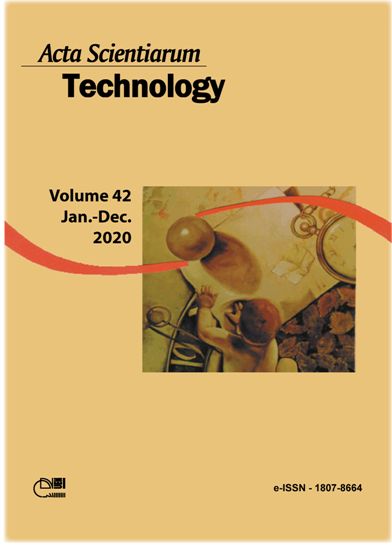Urban growth dynamics based on surface Albedo changes in Petrolina, Brazil
DOI:
https://doi.org/10.4025/actascitechnol.v42i1.46270Palavras-chave:
urban expansion; remote sensing; urban planning.Resumo
Cities keep growing, and in most of the cases this expansion process is hard to model and describe for planning actions. Quantitative methods are increasingly used to help planning, monitoring, and regulating urban land-use processes. Remote sensing images series are making possible different types of spatial-temporal analysis of the Earth surface. Surface albedo is a remote sensing product acquired in a long series of satellite images such as Landsat (more than 40 years of observation). Those analyses allow measuring waterproofed areas for urban drainage studies, as well as monitoring urban spreading patterns, growth vectors, and issues related to comfort and environmental quality, as well as about land use and land-use planning (directives for master plans) among others. This article shows the direct applicability of surface albedo changes as an indicator of urban land-cover changes. The current study analyzed the urban area of Petrolina County (PE) in the following periods: 2001 and 2006, 2006 and 2011, and 2011 and 2017. Such analysis uses the surface albedo variation along the time and results showed a strong correlation between increased surface albedo and urban expansion. Besides, it enabled to observe the relation between the high urban growth in the 2011-2017 period and the urban spot expansion by 14% (approximately 590 thousand square meters of territorial extension). The Urban development stood out in the Northern and Southwestern regions of Petrolina County.
Downloads
Downloads
Publicado
Como Citar
Edição
Seção
Licença
DECLARAÇíO DE ORIGINALIDADE E DIREITOS AUTORAIS
Declaro que o presente artigo é original, não tendo sido submetido í publicação em qualquer outro periódico nacional ou internacional, quer seja em parte ou em sua totalidade.
Os direitos autorais pertencem exclusivamente aos autores. Os direitos de licenciamento utilizados pelo periódico é a licença Creative Commons Attribution 4.0 (CC BY 4.0): são permitidos o compartilhamento (cópia e distribuição do material em qualqer meio ou formato) e adaptação (remix, transformação e criação de material a partir do conteúdo assim licenciado para quaisquer fins, inclusive comerciais.
Recomenda-se a leitura desse link para maiores informações sobre o tema: fornecimento de créditos e referências de forma correta, entre outros detalhes cruciais para uso adequado do material licenciado.



















